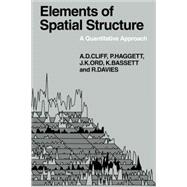
Note: Supplemental materials are not guaranteed with Rental or Used book purchases.
Purchase Benefits
What is included with this book?
| Introduction | |
| Static Aspects of Regional Structure | |
| Regions as combinatorial structures | |
| Regions as ordered series | |
| Regions as surfaces | |
| Dynamic Aspects of Regional Structure | |
| Spatial comparison of time series: a framework | |
| Spatial comparison of time series: I. Contagious processes | |
| Spatial comparison of time series: II. Unemployment in South-West England | |
| Autocorrelation and Forecasting | |
| Spatial autocorrelation | |
| The analysis of regional patterns by nearest-neighbour methods | |
| Regional forecasting | |
| Appendices | |
| Table of Contents provided by Publisher. All Rights Reserved. |
The New copy of this book will include any supplemental materials advertised. Please check the title of the book to determine if it should include any access cards, study guides, lab manuals, CDs, etc.
The Used, Rental and eBook copies of this book are not guaranteed to include any supplemental materials. Typically, only the book itself is included. This is true even if the title states it includes any access cards, study guides, lab manuals, CDs, etc.